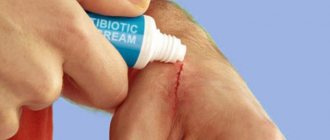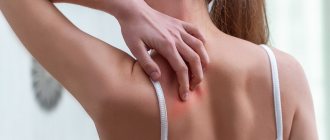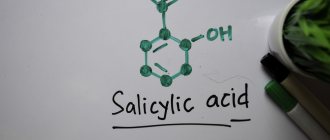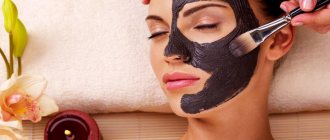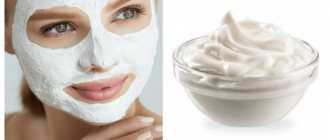June 1, 2020
The issue of visiting a solarium for psoriasis worries many people, since light therapy is widespread for skin diseases. Dermatologists often prescribe ultraviolet light treatments because they have beneficial effects on the skin. But the question of whether it is possible to go to a solarium with psoriasis cannot be answered with certainty that it is, since the form of the disease plays a role. In general, the procedure is really useful, but the final decision on prescribing such treatment should be made by a specialist.
Is it possible to visit a solarium if you have psoriasis?
Phototherapy - ultraviolet light treatment - has been used since ancient times and produces results for skin diseases.
Let's first look at the emission spectrum of sunlight:
- UV- A (UV-A) - ultraviolet rays of spectrum A. Light with a wavelength of 315-400 nm passes through the Earth's atmosphere with virtually no loss.
- UV- B (UV- B ) - ultraviolet rays of the B . Light with a wavelength of 280-315 nm, the Earth's atmosphere absorbs 90% of it.
- UV- C (UV-C) - ultraviolet rays of the C .
Light with a wavelength of 100-280 nm is absorbed almost completely by the Earth's atmosphere.
The UV-B spectrum is considered beneficial for the body. UVA light penetrates deep into the skin and can cause burns.
In tanning salons, combined lamps are used - with a spectrum of UV-A and UV-B . Therefore, you can sunbathe in a solarium if you have psoriasis, but be careful and do not overuse it, so as not to get burns.
Phototherapy
The therapeutic properties of ultraviolet radiation are based on its ability to influence immunoregulatory processes, as well as the effect of slowing down the growth of skin cells, which has a positive effect on the weakening of psoriasis. The following light therapy techniques are used in clinical practice:
- PUVA therapy – combined exposure to waves of a certain light spectrum and frequency and medications that increase skin sensitivity to ultraviolet radiation;
- UVB-311 nm - narrow-band phototherapy that does not require the use of photosensitizers
- laser therapy - focused light beams for specific localizations of psoriasis;
- selective light therapy - the use of medium- and long-wave radiation simultaneously for a combined effect on the superficial and deep layers of the skin.
Photo 3. Solarium.
Photo 4. UVB-311 nm phototherapy.
All types of light therapy must be correctly selected by a doctor based on the results of a comprehensive diagnosis: assessment of skin phototype and photosensitivity, clarification of the condition of internal organs, etc.
Does solarium help with psoriasis?
Horizontal solarium
For the treatment of psoriasis, solarium helps in some cases because it contains ultraviolet light with a wavelength of 280-315 nm. However, this is ineffective because the tanning light is too broad spectrum.
For the treatment of psoriasis, the best result is obtained by a wavelength of 311 nm, which has been repeatedly proven by Russian and Western scientists. There are special lamps for the treatment of psoriasis, the ultraviolet of which is narrowly focused and gives an accurate result: it acts where it is needed.
Skin care with "Losterin"
The use of products from the “Losterin” series has a positive effect in the treatment of psoriasis and has a beneficial effect on the skin at any stage of the disease. Phototherapy dries out the skin, which can cause irritation. Shower gel and shampoo "Losterin" with pronounced anti-inflammatory, exfoliating and antifungal properties will help your skin regain balance and increase the regenerative functions of the skin. Natural components in the composition will eliminate the need to use additional moisturizers and the occurrence of allergies.
Treatment of psoriasis with solarium
You need to understand that solarium is not a method of treating psoriasis, but a cosmetic procedure.
Sunbathing in a solarium for psoriasis cannot be a therapeutic procedure. Because the lamps that are installed there are not intended for treatment. They have a different spectrum, wider than what is needed to reduce psoriatic rashes. And no doctor will prescribe procedures in a solarium , since in this case it is impossible to calculate the dose of ultraviolet radiation for treatment.
You can use a solarium only for tanning, to dry spots, but nothing more.
Indications for visiting a solarium
There are medical indications for visiting a solarium, but this procedure is not strictly medical and is used in the complex treatment of certain conditions. So, a doctor can prescribe a course of “artificial sun” for conditions such as:
- chronic colds and diseases of the ENT organs;
- chronic inflammation of the lungs or bronchi;
- D-hypovitaminosis;
- non-communicable skin diseases: dermatitis, eczema, psoriasis;
- living in regions with low levels of natural insolation;
- chronic low mood up to depression;
Young people often get hooked on artificial tanning due to its aesthetic effect.
In addition, visiting a solarium is useful for increasing overall immunity; this procedure can be part of a complex of rehabilitation measures after illnesses and injuries. The therapeutic effect of a solarium is based on the effect of ultraviolet irradiation, which has bactericidal properties, which leads to accelerated tissue regeneration. Vitamin D produced under the influence of UV rays helps to increase the absorption of calcium, which in turn improves the body's protective functions. Among other things, under the influence of solar radiation, the body produces endorphins, or “hormones of joy,” which help improve mood and increase vitality.
Solarium for psoriasis: reviews
Reviews are mostly positive. sexpresso.ch. For some patients, only this method is suitable:
Reviews of solariums for psoriasis from user drip
Reviews of solarium for psoriasis by Guest_Amela
Reviews of solariums for psoriasis from user Alexius
Reviews of solariums for psoriasis by Belle
Reviews of solariums for psoriasis by John
Please note that solarium provides only a temporary effect and sometimes short-lived. Psoriasis needs to be treated using complex methods.
Those who have tried to treat psoriasis in a solarium say that you need to use the solarium in doses so as not to get burned. How many minutes to go to the solarium for psoriasis is calculated individually:
Reviews of solariums for psoriasis from user Vertero
Reviews of solariums for psoriasis by Lenor
Medical myths. Psoriasis
Psoriasis is a relatively common immune-mediated skin disease. The main manifestation is dense flaky spots, usually localized on the knees, scalp, elbows, and back. On light skin, such areas appear redder; on dark skin, they appear violet or purplish.
The global prevalence of psoriasis is difficult to estimate, but such studies are being conducted. In particular, one of the most authoritative medical journals in the world, the British The BMJ (until 1988, the official full name was “British Medical Journal” - note by Lakhta Clinic ), in 2022 published data according to which the incidence of psoriasis varies from 0.14% among the population East Asia to 2% in Australia and the Pacific. According to other studies (PubMed database), the prevalence of this disease in Norway reaches 11.4%.
It should be noted that psoriasis, in addition to physical discomfort, causes a negative psychological state and significantly reduces the quality of life. In addition, many patients are faced with the phenomenon of social stigmatization (ancient Greek “stigma” - literally “label, stigma.” We are talking about the phenomenon of irrational, prejudiced rejection, condemnation and rejection of a person by society for the sole reason that he suffers a certain disease - note from Lakhta Clinic ). One publication states that “...stigmatizing attitudes towards people with psoriasis are widespread. This unacceptable and intolerable situation can only be overcome through targeted awareness-raising campaigns targeting paramedics and society at large.”
In support of this initiative, let's look at some of the persistent myths and prejudices surrounding the problem of psoriasis. In preparing the latest issue of Medical Myths, we have had the kind help of two experts. David Chandler is chief executive of the Psoriasis and Psoriatic Arthritis Research Alliance (UK). His compatriot Dominic Urmston is the patient advocacy and communications manager at the Psoriasis Association.
Psoriasis is contagious
Despite the amazing persistence of this idea, it is completely untrue. According to D. Chandler, “It is impossible to become infected with psoriasis, since it is an autoimmune disease. The body’s defense system in some people does not react correctly to its own skin cells, which are also produced too quickly, but this is a purely individual, non-contagious feature.”
The same fact is emphasized by D. Urmston: “Psoriasis cannot be transmitted from person to person, either through direct tactile contact or through biological fluids (for example, during a kiss, when sharing food, drinks, etc.). It is not transmitted in close crowds of people, for example, in public places, in swimming pools, saunas, etc. This is impossible in principle.”
Psoriasis is simply dry skin
“No, it’s much more serious,” says D. Chandler. “The point is not only an autoimmune attack, but also a sharply accelerated skin renewal: if normally this process takes about 28 days, then with psoriasis the renewal cycle can be reduced to 4-5 days.”
At such rates of regeneration, skin cells simply do not have time to fully mature, transforming instead into scales, which the body cannot get rid of in the usual subtle way. In addition, continues D. Chandler, “pathological changes concern the circulatory system: the vessels are closer to the surface of the skin, which leads to redness, irritation, and when scratched, to bleeding of the affected areas.”
“In the most severe cases, psoriasis manifests itself as bleeding cracking of the skin, which is a debilitating and unpleasant condition,” confirms D. Urmston. “Such lesions of the hands can make daily activities difficult and limiting, and psoriasis that primarily affects the buttocks and/or groin area can make even ordinary sitting or going to the toilet painful.”
Psoriasis – it is psoriasis, everyone has the same
This is a popular misconception or rather a lack of information. There are actually quite different varieties of psoriasis. “The most common of these,” says D. Chandler, “is accompanied by large plaques on the skin and the typical thick silvery scales.” Other types include:
Guttate psoriasis (sometimes called “raindrop psoriasis” because the areas of peeling and redness form in a teardrop shape);
- inverse or inverse psoriasis (also known as “psoriasis of the folds”: this type is typical only for those areas where there is contact and friction of the skin areas against each other, for example, in the armpits, groin or under the mammary glands in women);
- erythrodermic psoriasis (sometimes the reverse order of terms is used, i.e. psoriatic erythroderma), is a special type of psoriasis, manifested by a scaly red rash almost all over the body;
- pustular psoriasis (in this case, ulcers form, most often on the arms and legs).
Psoriasis is caused by poor hygiene
"Of course not! - says D. Chandler. “In fact, people with psoriasis take very good care of themselves, since flaky and irritated skin requires constant care.”
And even the cleanest person can get psoriasis. David Chandler further explains that many patients are forced to perform certain procedures at least twice a day, spending a lot of time on them - especially if the scalp is affected. If you skip these procedures, then it will be very difficult to return to an acceptable condition.
Psoriasis can be cured
Unfortunately, this remains a myth: to date, there is no radical treatment for psoriasis. However, intensive research is underway, and D. Chandler is convinced that such a treatment may appear in the foreseeable future.
D. Urmston adds an important detail: “psoriasis can be successfully controlled and treated symptomatically; Dermatology has accumulated an extensive arsenal of effective palliative treatments.”
Psoriasis affects only the skin
Skin lesions are the most noticeable manifestation of psoriasis, but the disease is systemic and not exclusively cutaneous. Dominic Urmston explains: “Psoriasis can affect more than just the skin. From 6 to 42 percent of patients also suffer from psoriatic arthritis, a non-infectious inflammation of the joints. The most common areas of inflammation in such cases are the knees, joints in the hands and feet, and where tendons attach to bones, such as the heel or lower back.”
As shown above, the impact of psoriasis on health and well-being is not limited to physical negative effects. In addition, the psychological state suffers significantly. “People with psoriasis [compared to the general population] are much more prone to anxiety, depression, low self-esteem and self-esteem,” says Urmston. “All of this has a very negative impact on the quality of everyday life.”
Nothing helps with psoriasis
Despite the lack of etiopathogenetic therapy, psoriasis is by no means an incurable condition. “There are many remedies that are effective in relieving the symptoms of psoriasis, depending on how intense the process is,” explains D. Chandler. – Today, various topical (local) creams, ointments, foams and gels are used. Light therapy has been developed and introduced into clinical practice. In some cases, the pathological process is controlled by oral agents and injections - and each method, of course, has its own indications and contraindications, advantages and associated risks.”
Since psoriasis is a chronic disease that accompanies a person throughout life, the patient needs to work closely with the doctor to make adjustments to the treatment plan as necessary.
Dominic Urmston: “Most people facing the problem of psoriasis begin treatment under the constant supervision and control of a family doctor, who may prescribe certain topical (applied directly to the skin) products in various dosage forms, i.e. in the form of creams, ointments, gels, etc. In more severe cases, as well as in the case of ineffectiveness of the prescribed treatment, the general practitioner should refer the patient to a specialized dermatologist, who will consider the feasibility and offer options for additional treatment, for example, ultraviolet light therapy, tablets, injections, etc.” .
Only adults get psoriasis
“Psoriasis is most common among adults, but the disease often begins in adolescence and then continues throughout life. Psoriasis also occurs in childhood, and occasionally even in infants,” explains D. Chandler.
With reference to publications in the world's most cited scientific and medical journal JAMA (“The Journal of the American Medical Association” - Note by Lakhta Clinic ), D. Urmston adds that “in all likelihood, there are two peaks in incidence: the first - from late adolescence to 30 years of age, and the second is between 50 and 60 years of age.”
Psoriasis is the same as eczema
Although the primary symptoms of eczema and psoriasis may appear to be similar dermatological problems, they are two completely different diseases.
According to the explanations of D. Chandler, “eczema is often based on an allergic reaction, unlike psoriasis. Another difference is that eczema often begins in early childhood and may improve over time.”
And vice versa: psoriasis in children is less common, but tends to persist for life.
“In addition, these diseases affect different parts of the body,” D. Urmston writes to us. “Eczema usually appears on the inside of the elbows and knees (the folds), while psoriasis most often manifests on the outside of large joints, as well as on the scalp.”
In general, eczema and psoriasis have different development mechanisms. Psoriasis is an autoimmune disease, while the etiopathogenesis of eczema may be associated with genetic, environmental and some other factors.
It should be noted, however, that some experts also classify eczema as a disease with an autoimmune component.
D. Urmston emphasizes: “Whether it ultimately turns out to be eczema or psoriasis, it is critical to contact a qualified doctor in order to develop and implement an appropriate therapeutic strategy as soon as possible.”
Psoriasis can be cured with a special diet
“No one has yet provided a single piece of evidence in favor of this or that diet that is supposedly capable of curing psoriasis,” D. Chandler tells us. “This disease occurs in waves, so if they wish, people can always see a non-existent connection between some changes in diet and changes in well-being.”
However, the expert’s response also states that “a healthy, balanced diet, maintaining a normal weight and regular exercise are recommendations that, if followed, will in any case benefit your overall well-being and health.”
D. Urmston completely agrees with this: “At the moment, there is no reliable research evidence that any dietary adjustments would alleviate the symptoms of psoriasis. However, we know for sure that obesity, alcohol and smoking aggravate these symptoms - in other words, a healthy lifestyle is necessary to control this disease.”
What to take note
To date, psoriasis cannot be completely cured, but its manifestations can be successfully controlled with palliative therapeutic control.
Anyone who suspects the onset of psoriasis should see a doctor immediately and, if the diagnosis is confirmed, begin treatment as soon as possible.
As with many other similar diseases, research into the mechanisms of development and progression of psoriasis continues. Ways to reduce clinical symptoms are constantly being improved, and one day a definitive treatment will be developed.
Based on materials from Medical News Today
For more details, see the materials “Psoriasis” and “Eczema” on our website
conclusions
Solarium is harmless for psoriasis if you do not abuse it. If you have psoriasis, you can visit the solarium, but only wisely and in doses. Otherwise, there is a risk of getting a burn or even skin cancer.
Treating psoriasis in a solarium is ineffective, as it does not help everyone. In most cases, if a solarium helped you, the effect is temporary. To achieve stable remission, use phototherapy methods for psoriasis. With this treatment, ultraviolet light is strictly dosed and treats exactly where it is needed, in a narrowly targeted manner.
In addition, use complex therapy methods:
- Follow a diet for psoriasis. Proper nutrition cleanses the body from the inside and gives the necessary energy to fight the disease.
- Non-hormonal ointments and shampoos for psoriasis help exfoliate scales. Choose the most natural composition and minimum side effects.
- Ultraviolet 311 nm strengthens the effect and helps achieve stable remission. It is more effective to use this method when there are no crusts or dry scales on the plaques.
- Relaxation, rest, general relaxation of the body. Avoid stress, think optimistically, enjoy your favorite activities.
What you need to know about psoriasis: causes, symptoms, treatment and complications
How to cure psoriasis once and for all is a common question for doctors. Only remission can be achieved. Psoriasis on the face is especially troubling for patients. To minimize its manifestations, you need to exclude risk factors and follow your doctor’s recommendations. Therapy is selected strictly individually, medications are changed periodically. This is necessary due to the rapid addiction to them and the reduction of their effect. Psoriasis on the elbows and other parts of the body can be treated with corticosteroid ointments. They are especially used in the acute stage of the disease, and then switch to non-hormonal drugs to fix the state of remission. “I treat psoriasis on my own” - this approach to this disease does not justify itself. Typically, therapy is prescribed by doctors using:
- physiotherapy (ultraviolet irradiation);
- plasmapheresis to remove toxins and autoantibodies;
- drug therapy.
The role of nutrition in treatment
Psoriasis on the head, elbows, and legs can be controlled with nutrition. The patient's menu should consist of 70-80% alkali-forming foods - fruits. It is recommended to eat apples, bananas and melons separately from everything else, not combining them with anything else. The situation is similar with citrus fruits. They should not be consumed in combination with whole grains. Acid-forming foods are also a good cure for psoriasis. This category includes: meat, potatoes, beans, cheese, grains, sugar, cream, etc. How to treat psoriasis with an appropriate diet is easier to predict and plan. It is recommended to include broccoli, fish, kefir, milk, bran, buckwheat in water, green vegetables, and lamb in the menu. Diet for psoriasis is a good enhancement to therapy.
Home remedies
Psoriasis requires treatment under the supervision of a doctor, but home remedies can help relieve symptoms. It is recommended to take baths using St. John's wort, celandine, and sage. A compress of water and soda (1 tablespoon per 30 ml of boiled water) will help reduce itching. Treatment with folk remedies will help to go from start to finish and put psoriasis into remission, but it requires consistency and regularity. You can take baths with baking soda before bed. For this you will need 1 kg. After the procedure, you need to generously lubricate the body with fatty cream. Over-the-counter ointment for psoriasis can be expensive and have side effects. But it can be replaced with healing mud from the Dead Sea, which is also on sale. An effective natural remedy can put psoriasis into remission when used systematically during an exacerbation.
The best remedies for Psoriasis
Add to cart
Antipsoriasis cream 990 rub.
Add to cart
Magnipsor ointment RUB 1,490
Add to cart
Ultraviolet lamp Dermalight ® RUB 14,900.
Rules for using the solarium
Before going to the solarium, you need to get medical advice to determine possible contraindications. First of all, you need to consult a dermatologist. He will not only identify possible problems, but will also help determine the timing of procedures, developing an individual course just for you. He can also choose the appropriate tanning cream or oil. You should not always rely on the opinion of consultants in a tanning salon, because... they are more interested in profits than in your health.
Choose a reliable salon: read reviews, talk to the administrator, try to read the technical documentation for the equipment. If you find out that the lamps have worked for more than 600 hours, it is better to refuse the services of this institution.
Tanning equipment can be provided in the salon
Gather the necessary equipment. The salon consultant will tell you what you need to take with you and what the salon will provide. A hair cap, glasses, chest pads and sunscreen are mandatory.
Before visiting the solarium, you need to wash yourself without using soap so as not to damage the natural protective layer of the skin. It is not recommended to wash with soap even the day before visiting the solarium. On the day of visiting the solarium, you cannot use cosmetics and perfumes, or you need to wash them off thoroughly. An hour before the procedure, it is advisable to drink a glass of pumpkin, carrot or apricot juice: they increase the effectiveness of tanning.
